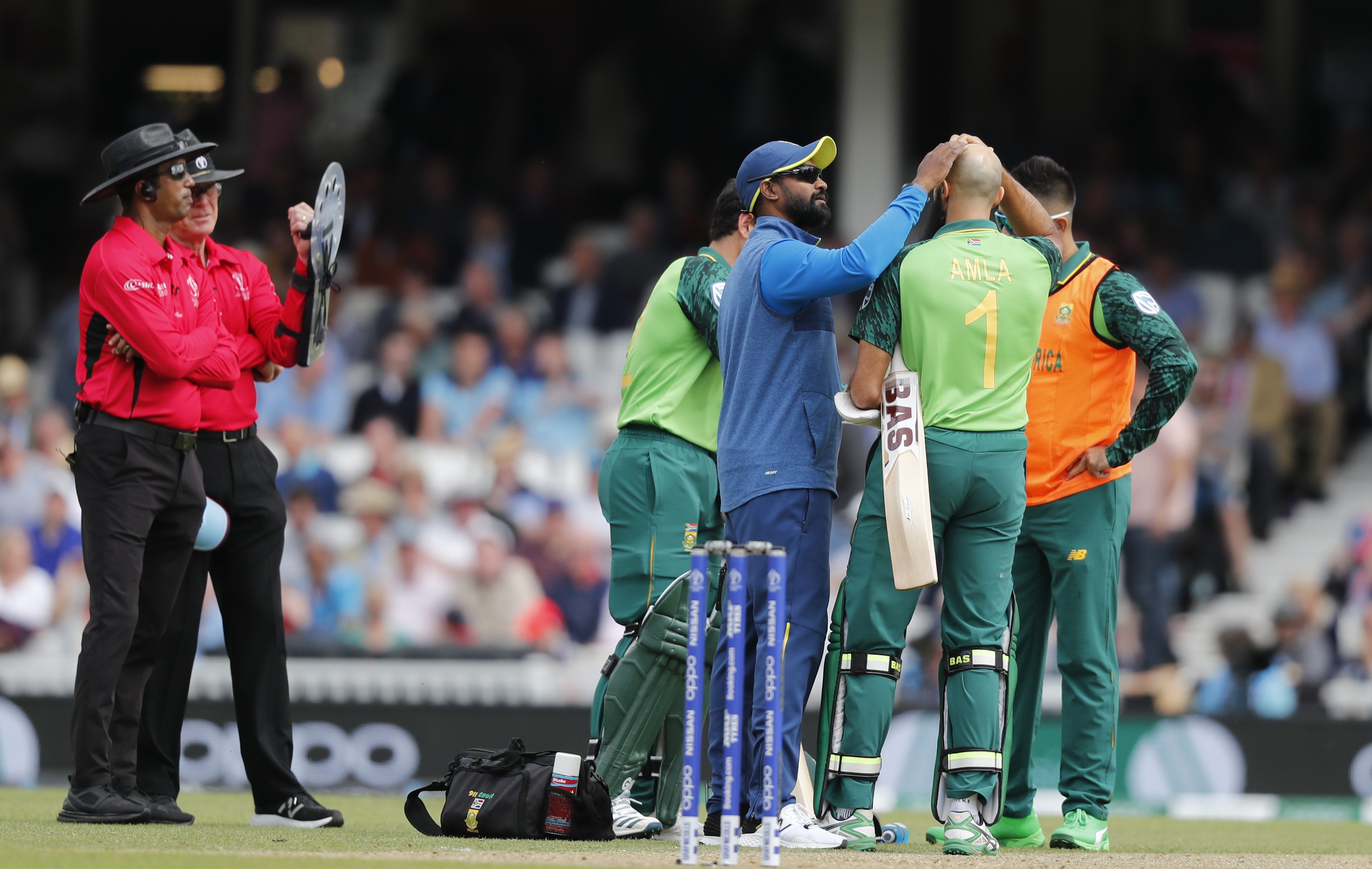A lot has happened barely a week into the World Cup. Such as the shell-shocked look of Hashim Amla after Jofra Archer crashed one onto his helmet grille. The brutal pounding the West Indian quicks subjected Pakistan to. The stuffed up slip cordons the Kiwis brought on against the hapless Sri Lankans. Or how the much neglected Bangladesh yanked the rug from under the Proteas’ feet with the biggest win this tournament so far.
But where is the swing?
The question is not only being asked by the Barmy Army, but across the cricket universe.
England, where the ball prodigiously swings for anyone who is a decent bowler, hasn’t seen the ball swing much to keep the question away.
Short-pitched, fast bowling, on the coin, seems to have emerged as the new go-to for bowlers as they look to bring balance to the white-ball format that normally has the bat dominating.
Bowlers banging it in short, at your chest or making it whizz past your eyelashes, well almost, has now become a necessity, not a tactic.
That’s primarily because the ball doesn’t swing anymore in England. And it all points to a well-thought-out call to make the format even more batsman-friendly, and thus churn out tracks that are belters, producing runs by heaps.
So why doesn’t the ball swing anymore? Or how did it swing in the first place?
Numerous studies, some with the knowledge of aerodynamics experts from Nasa, have been conducted to decipher the mystery art that seems to have vanished.
Experts will tell you about laminar flow or, simply put, how the air flows over the two sides of the ball.
Academic terms like varied levels of the overcast conditions, localised air turbulence, the heat and humidity, to the perfect broadcasting quip – “oh he releases the ball perfectly, look at the seam position, angled perfectly, steady rotations after it leaves the hand…”.
We have heard it all before.
But take this as the perfect riposte: “There have been days when the sun is out and the ball swings and some days when it is freezing cold at the end of April and it swings. I couldn’t tell you when it is going to swing, NO!”
That was James Anderson, one of the finest swing bowlers of all time, deciphering the mystery of his craft, incidentally after appearing in an instructional video on swing bowling produced by the England Cricket Board (ECB) and a Nasa expert in 2015.
It’s been in the works for a while, this idea to strip the white-ball game of any powers that aid bowlers. The game’s organisers have increasingly felt the need to bump up their biggest attraction – big power-hitting from batsmen to achieve impossible targets to entertain the crowds.
But does big-hitting guarantee the entertainment and the footfall necessary for the game to survive?
It was just the other day that legends of the game made the clarion call to maintain balance between the bat and the ball.
Wasn’t it a major news headline across the world when Sachin Tendulkar called for ODIs to go back to using the one-white-ball format, instead of two from either end, signalling the need to bring back reverse swing towards the latter half of an innings?
It was easy for Tendulkar, the destroyer of the best bowling attacks across the world, to see that the current format - short boundaries, bigger blades, curbs on field settings and white balls that do not swing - needed to aid the bowlers a wee bit more.
A closer look at the ODIs played in England over the past couple of years though would point to the administrators’ panacea to Tendulkar’s suggestions.
Hence the ‘pataa’ wickets, or belters that have brought up massive scores.
A 300-plus score is just about par for England, they have bested and belted many a record, and along with the West Indies, would be looking to breach the 500-run summit.
Fearing slow turners later on, the curators seem to have presented strips with a bit of grass and the accompanying bounce for the time being at the World Cup.
And the long tournament this is – soon enough we will see the massive scores.
Surely with their brief to produce heavy-scoring strips, the English curators seem to have done their job well, and with reasonable gifts thrown in, too, for the occasional surprise. A belter will have one with a fair bit of bounce beside it, other venues might even have the ball buzzing up at batsmen, while some would produce slow turn.
With swing all but gone unless someone produces as crafty a spell like Wasim Akram in the 90s, the key to prising out batsmen would be simple: brutal, yet well-directed, short stuff, length variations and crafty wrist-spin.
The Kookaburra ball isn’t expected to swing more than the first five overs of a game, and thus taking “the new ball in English conditions” could well be a thing of the past.
There’s even a fair bit of chatter on social media that the Kookaburra doesn’t even have a pronounced seam, ones with which Anderson and company made merry in the past.
So you’ve got to back your cutters, knuckle-balls, and your stock slower ones, though the slowness in certain pitches could have your delivery belted by the batter to the spectator.
Unless, of course, a new phenomenon emerges who can still swing the ball conjuring the mystery art with ease.
Think about Trent Bridge, Nottingham, where Jimmy Anderson became the king of swing, snaring the most wickets over a memorable career.
And then go back to how the West Indies demolished Pakistan at the very same venue breathing fire with their short, bouncy barrage.
The game has swung in a different direction. We will see by how much over the next five weeks.
Sanjeeb Mukherjea is a sports television personality. An award-winning journalist, Mukherjea is also the lead anchor and commentator for the 2019 World Cup for Star Sports 1 Bangla











